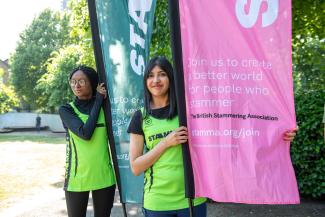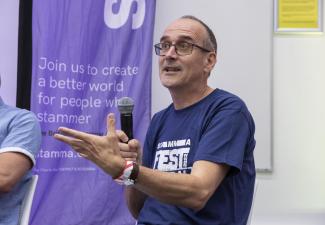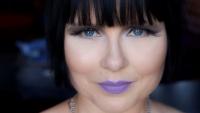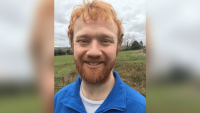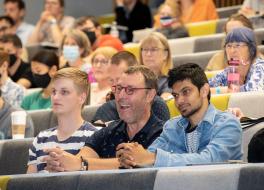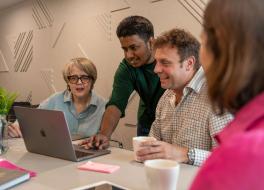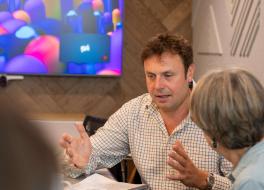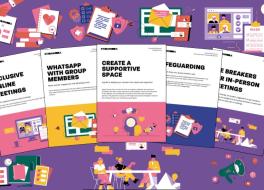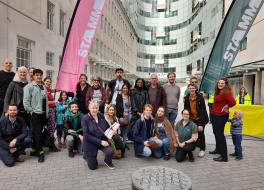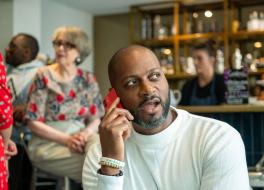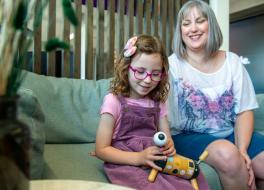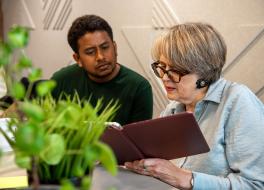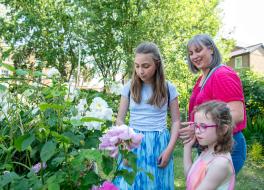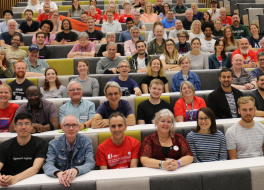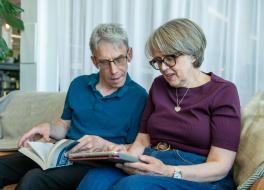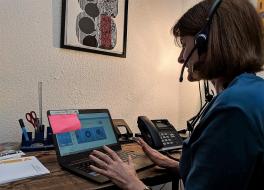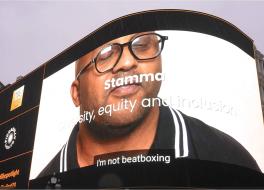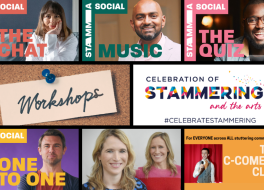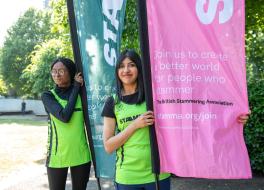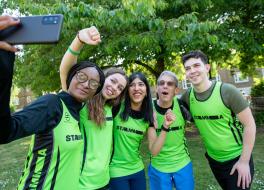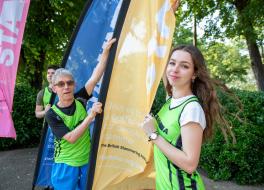Dysfluent Journeys Short Film

Fresh from a showing at a film festival in Bristol, Cathy Soreny tells us about Dysfluent Journeys, a short documentary exploring the lives of people with speech differences, as well as the collective behind it and what she learnt from the experience as someone who doesn't stammer.
This summer we had the chance to put stammering and disabled speech at the heart of an international arts event. Our short documentary film Dysfluent Journeys was screened at the Royal Anthropological Institute Film Festival, at the Watershed Cinema in Bristol. The festival screened 90 films from across 36 countries. Anthropology is the study of what it means to be human, by exploring cultures and societies. Knowing that our work was representing disability culture within this event is empowering — not just for us as filmmakers but for the wider communities of disabled speakers too.
Our focus is on exploring creative ways to challenge society's unquestioning expectations around fluency and clarity of voice.
Dysfluent Journeys explores personal, lived experiences of dysfluent speech. It follows five people with five different ways of speaking as they make their way through the world. Christine and Anne-Marie reflect on their stammers as being part of their identity; Emily speaks about how people respond to her dysarthria (unclear speech); and Jamie and Greta talk about how their communication devices give them agency in their lives. (Watch the trailer for the film below.)
It was co-created by the Stories Beyond Words Collective, a group of disabled and neurodiverse filmmakers, activists and researchers. Our focus is on exploring creative ways to challenge society's unquestioning expectations around fluency and clarity of voice. Our approach is rooted in self-representation and disability visibility.
Dysfluent Journeys, and our work, is part of our wider creative research project. The early plans for this were run by STAMMA's Research Arena, which helped us to refine our plans for engaging the stammering community.
Collaboration
Every part of the film was developed in collaboration — from the theoretical basis, through the storyboarding, to the filming and editing. We have worked closely together across multiple online and in-person workshops to develop our ideas, insights and skills.
I've enjoyed the process of recalibrating my pace within our group, especially in how I listen.
Across this process we learned so much from each other as we navigated our creative discussions, around our diverse communication patterns and needs. I myself am not dysfluent but I am neurodiverse, which leads me to speak with intensity, at a fast pace. I've enjoyed the process of recalibrating my pace within our group, especially in how I listen. We all have embraced the musician JJJJJerome Ellis's concept of being at peace within a 'Clearing' (the name of his album). To just be with each other — as someone blocks, composes a thought on their communication device, or repeats a few times for clarification.
Reactions
Dysfluent Journeys was originally created as an immersive multichannel video installation. It has been run at Yorkshire Artspace in Sheffield and Barnsley Hospital (watch the video below). But we decided to reach wider audiences by developing a film version for screening at festivals and events. We screened the first version of this at STAMMAFest last year. Generous audience feedback from the stammering community helped us to finalise it, ready to share wider. We were curious to see if the film would have the same impact on audiences as the installation experience. We are pleased to report that it did.
Audience members, many of whom were fellow filmmakers, expressed emotional reactions. They felt they had experienced a unique insight into communication differences that often isn't seen or discussed. It provoked them to reflect and reappraise their current perspectives. They talked about feeling connected to our five protagonists in the film, and feeling curious to find out more. Time, and its importance for disabled communicators, shone through as a key theme.
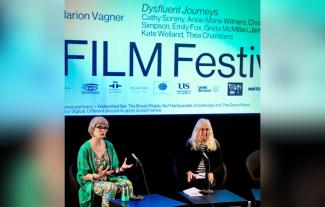
Reflecting back on all the comments from the Q&A session and over the festival, it is reaffirming to hear how our messages are landing with fluent audiences. Our work is encouraging people to open their minds to listening differently. This film is triggering realisations that accepted communication norms are not universal, and do need to be questioned.
The project is growing from here, bolstered by this feedback. The film has been entered into other film festivals, and other screenings are being organised. It has now been included in the Royal Anthropological Institute's film catalogue for academic use and view on demand. If you are interested in hosting a screening or the installation, please get in touch using the contact details below. We are keen to share the message with all groups, especially trainee health care professionals.
Cathy Soreny is a filmmaker, researcher and nurse who specialises in collaborative and co-design projects. She is undertaking her PhD research in the Art, Design and Media Research Centre at Sheffield Hallam University. She is project lead for Stories Beyond Words.
The Stories Beyond Words Collective are: Jamie Preece, Emma Sullivan, Emily Fox, Christine Simpson, Anne-Marie Withers, Greta Chambers-McMilla and Thea Chambers. You can get in touch with them by emailing storiesbeyondwords@gmail.com
Watch more videos via their YouTube channel @storiesbeyondwords. Follow Stories Beyond Words on Instagram @storiesbyndwrds.
STAMMA Member John shares his thoughts...
John Russell saw the film at the Watershed Cinema in Bristol. Here's what he said:
Dysfluent Voices was a good mixture of being educational and awareness-raising. One of the people featured who stammered said that there's a pressure to communicate quickly, which can lead to misunderstandings. Jamie, a wheelchair user who has unclear speech, echoed this. He described how important his computer-based communication device is, being like an extension of his personality, and that if he is rushed and pressured to communicate, his arms go into spasms, which means he takes longer to get across his needs, etc.
Above all this was a human story of those facing communication challenges, but who are determined to get their views and opinions across. Viewers will, I am sure, be moved by what they see and hear, as well as have their perceptions challenged.
